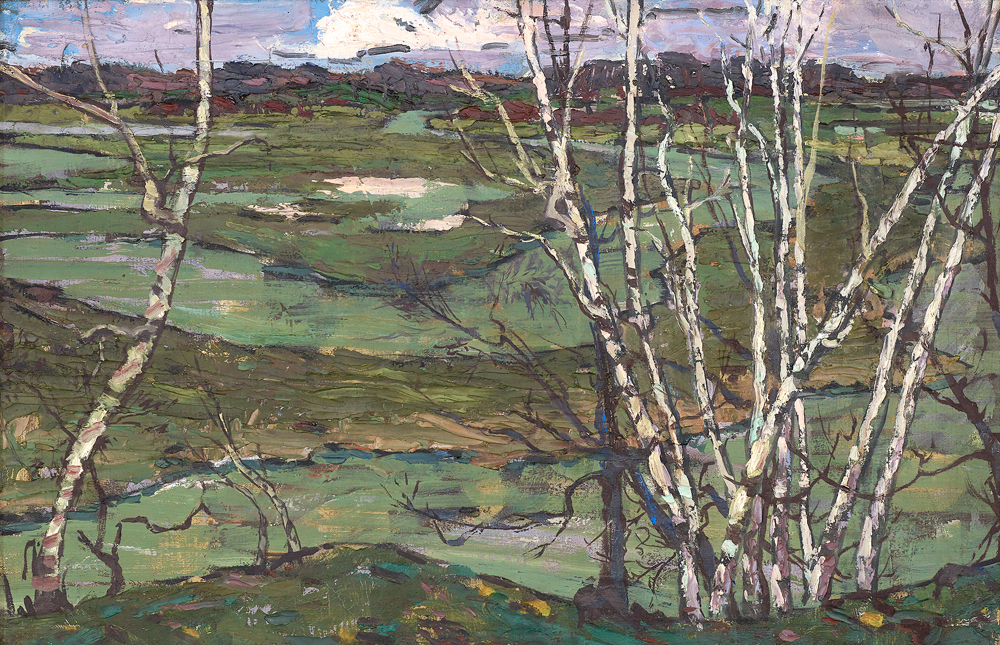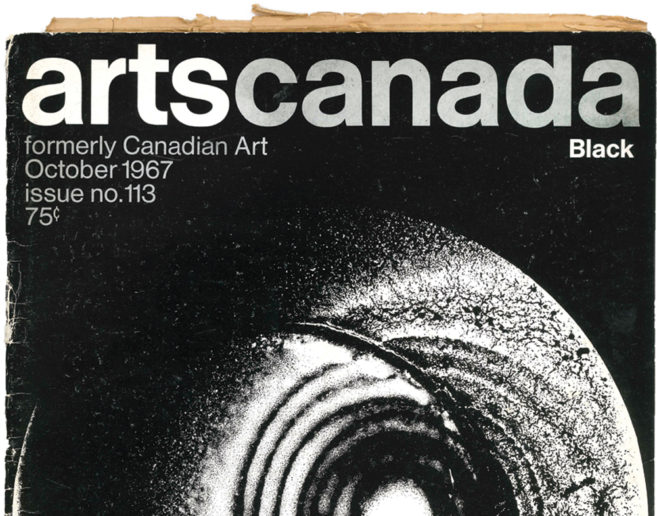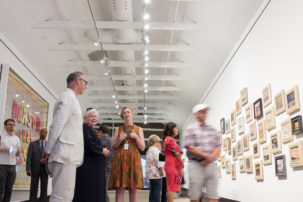In 1930, an anonymous Ottawa Citizen art critic paid artist Florence McGillivray what, at the time, he probably considered to be the highest possible compliment: “[She is] one of the most vigorous of Canada’s women painters. There is nothing effeminate in her art.”
McGillivray was an accomplished artist in an era when women were unquestionably treated as subordinate to men. In the greater narrative of Canadian art, she is still treated as a footnote. Yet McGillivray was an artist brimming with talent. She clearly made an impact on Tom Thomson, with whom she enjoyed a close personal relationship.
Bringing McGillivray out from the margins is certainly due. A closer examination of her mentorship of Thomson has the potential to shift the foundation story of modern Canadian art—that of the lone genius woodsman-painter inspiring the Group of Seven to paint the spirit of a new nation from the land. Not only would it allow a woman into that origin story, but it would also finally identify the source of the European influence on Thomson’s work that had, until now, been ascribed to painter A.Y. Jackson. In truth, Jackson and Thomson knew each other on and off for less than two years, and parted ways, perhaps for good, in 1914. According to Group of Seven biographer Ross King, Jackson and Thomson spent little more than 12 weeks together, in close contact. The historical facts of dates and sketch trips remain, but because Thomson left behind no diaries or thorough primary documents, he has become the historian’s blank canvas. A thorough exploration of McGillivray’s oeuvre, and its foundational place in the Thomson legacy, makes a new prologue to modern Canadian art history necessary.
Although McGillivray’s art survived, her papers did not, so over the past five decades her story has been gradually pieced together from surviving shards of information and research by Katharine Lochnan, her great-great niece. In her day, McGillivray was celebrated, but like so many historical Canadian women artists, she has since plummeted from view. This is largely because she came from a prosperous Whitby family and was not obliged to make a living by selling her paintings—though she did sell some of them, and also worked as a teacher. She studied at the Central Ontario School of Art, developing a Victorian style that she later taught to others at Whitby Ladies College, before moving to Paris in 1913. There, her work underwent a radical transformation. While living in Montmartre and attending the Académie de la Grande Chaumière, she studied under Matisse, who insisted on submitting her painting Contentment (1913) to the Salon. This recognition led to her election for two terms as president of the International Art Union.
McGillivray entered the atelier of Lucien Simon and Émile-René Ménard, members of the Bande noire, a little-known group based in Paris and Brittany who took their inspiration from Gustave Courbet and his Realist circle, and were friends of Gauguin and Les Nabis. The Bande noire sought to create a moral, somber and bourgeois art, employing solemn tones, sharp contrasts of light and dark and thick lines characterized by spontaneity, simplicity and naivety. McGillivray experimented with a range of post-Impressionist styles before finding her own.
During the summer of 1914, she spent four months in Venice, where she attended the Biennale. On her way back to Paris via the Italian Lakes, she discovered that war had been declared. Chaos ensued. She managed to cross the Alps only to be stranded for three weeks in Switzerland. Forced to leave most of her sketches and art materials behind and cram necessities into a knapsack, she travelled in the first British train out of the war zone from Geneva to Paris, observing French soldiers, weeping families, German prisoners and Belgian refugees. After crossing the Channel, she boarded the SS Royal Edward and arrived in Quebec on September 26, 1914. She had enough space to bring back one tiny sketchbook: a collection of brilliant watercolours inspired by Turner and Whistler, painted during her time in Venice before Europe was ravaged by war.
Eventually, McGillivray settled in Toronto, and quickly established her reputation as a professional artist. Like the Group of Seven, she focused on the Canadian landscape, travelling up the Labrador and BC coasts. During the winter of 1916, she visited Thomson in his “shack” and became his mentor. He called her “one of the best,” and “the first of the artists to recognize instantly what he was trying to do.” She appears to have conveyed to him knowledge of the Realist, Nabis and Fauvist palettes and pictorial construction.
McGillivray received as much recognition as was then possible for a woman: she was elected to the National Association of Women Painters and Sculptors in New York; she was made an Associate of the Royal Canadian Academy of Art, a member of the Ontario Society of Artists and a founding member of the Canadian Society of Painters in Water Colour; and her work was purchased by the National Gallery of Canada and placed in museums across the country.
Thomson’s last, most confident and ambitious works clearly demonstrate McGillivray’s influence. She visited him at Canoe Lake in spring 1917 and likely painted with him; McGillivray’s Birch Trees and Lake (ca. 1917) and Thomson’s Spring in Algonquin Park (1917) are remarkably comparable. Following Thomson’s death in July of that year, McGillivray moved to Ottawa. An invitation to her March 1917 exhibition was discovered in Thomson’s paintbox.
The first major survey exhibition of Florence McGillivray’s work will take place at the McMichael Canadian Art Collection in Kleinburg, Ontario, in 2020, co-curated by Katharine Lochnan and Sarah Stanners.
This post is adapted from an article in the Fall 2017 issue of Canadian Art.

 Florence McGillivray Birch Trees and Lake ca, 1915.
Oil on canvas 22.2 x 55.4 cm Signed on verso. Private Collection, Estate of Kathleen Duminy; Restored at Queens University Restoration Program. Photo: McMichael Canadian Art Collection
Florence McGillivray Birch Trees and Lake ca, 1915.
Oil on canvas 22.2 x 55.4 cm Signed on verso. Private Collection, Estate of Kathleen Duminy; Restored at Queens University Restoration Program. Photo: McMichael Canadian Art Collection







